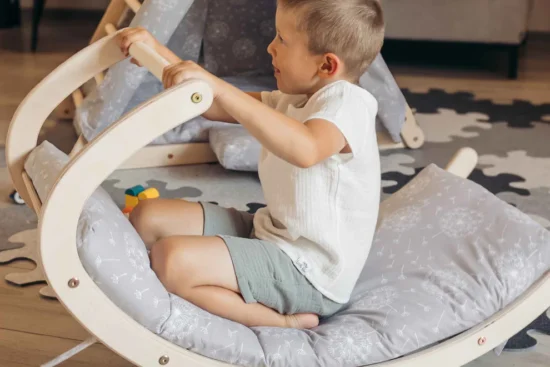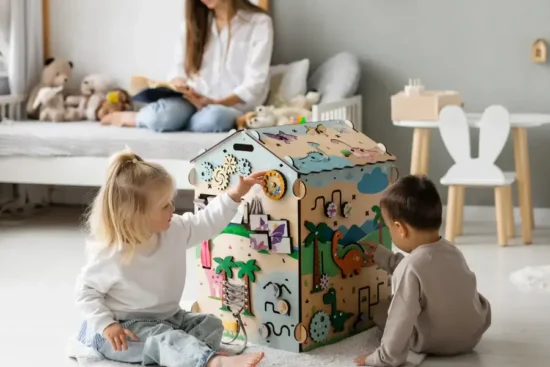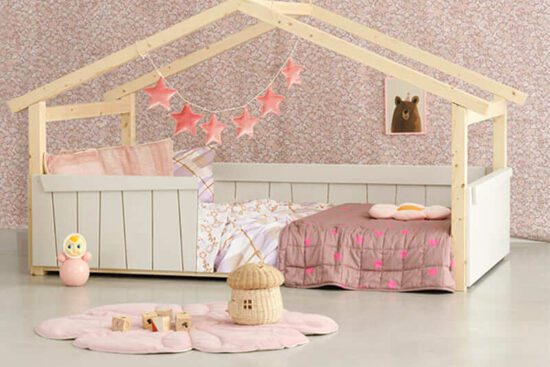Selbstständiges Spielen ist für die Entwicklung deines Kindes essenziell. Es fördert Kreativität, Konzentration und Selbstbewusstsein. Doch viele Eltern stehen vor der Herausforderung, dass ihr Kind ständig Aufmerksamkeit einfordert und sich kaum alleine beschäftigt. Laut Studien verbringen Kinder heute durchschnittlich 30 % weniger Zeit mit freiem Spiel als noch vor wenigen Jahrzehnten – eine besorgniserregende Entwicklung! Doch keine Sorge: Mit den richtigen Ansätzen kannst du dein Kind dabei unterstützen, mehr Eigenständigkeit zu entwickeln.
Warum spielt dein Kind nicht alleine?
Es gibt verschiedene Gründe, warum Kinder Schwierigkeiten haben, sich selbst zu beschäftigen:
- Fehlende Routine: Kinder gewöhnen sich daran, ständig unterhalten zu werden.
- Zu viele Ablenkungen: Fernseher, Tablets und andere digitale Medien nehmen Raum für kreatives Spielen.
- Unsicherheit oder Langeweile: Manche Kinder wissen nicht, womit sie anfangen sollen.
- Fehlende Umgebung: Ein zu stark reglementiertes oder einseitiges Spielumfeld kann kreatives Spielen hemmen.
Vorteile des eigenständigen Spielens
Eigenständiges Spielen bringt zahlreiche Vorteile mit sich. Es fördert nicht nur die Kreativität und Vorstellungskraft deines Kindes, sondern stärkt auch wichtige Fähigkeiten wie Problemlösung, Konzentration und emotionale Selbstregulation. Kinder, die regelmäßig alleine spielen, entwickeln mehr Selbstvertrauen und Unabhängigkeit, da sie lernen, Herausforderungen selbstständig zu bewältigen. Zudem hilft es ihnen, ihre eigene Persönlichkeit zu entfalten und ein Gespür für ihre Interessen zu entwickeln.
Die 10 besten Tipps, um dein Kind zum selbstständigen Spielen zu motivieren
Schaffe eine inspirierende Spielumgebung
Ein einladender Spielbereich mit offenen, vielseitigen Materialien regt die Fantasie an. Indoor-Klettergeräte wie ein Kletterdreieck oder eine Kletterwand aus nachhaltigem Holz bieten ideale Möglichkeiten zur Eigenbeschäftigung.
Reduziere Ablenkungen
Zu viele Spielzeuge oder Bildschirme können überfordernd sein. Weniger ist mehr: Hochwertige, multifunktionale Spielgeräte wie Kletterbögen fördern kreative Spielideen.Setze auf freies Spiel
Vermeide es, immer Anleitungen oder Spielregeln vorzugeben. Lasse dein Kind selbst entdecken, was es mit einem Klettergerät oder Motorikspielzeug machen kann.Baue Routinen ein
Plane bewusst Zeiten für freies Spiel ein. Anfangs kannst du daneben sitzen, dich aber bewusst zurückziehen, wenn dein Kind vertieft ist.Ermutige durch positive Bestärkung
Lobe dein Kind, wenn es sich alleine beschäftigt: „Toll, wie du das alleine geschafft hast!“Biete vielseitige Kletter- und Spielmöglichkeiten
Indoor-Klettergeräte sind nicht nur für die motorische Entwicklung wichtig, sondern auch für fantasievolles Spielen. Ein Kletterbogen kann zur Höhle, Brücke oder Schiff werden!Sei geduldig und konsequent
Eigenständiges Spielen muss oft erst gelernt werden. Es ist normal, dass dein Kind anfangs noch oft nach dir ruft.Spiele gemeinsam, um dann zurückzutreten
Beginne eine Aktivität zusammen und lasse dein Kind dann nach und nach alleine weitermachen.Nutze Alltagsgegenstände als Spielimpuls
Manchmal sind einfache Dinge wie Kartons oder Decken spannender als fertige Spielzeuge.Investiere in nachhaltige und kreative Spielmöglichkeiten
Hochwertige, umweltfreundliche Klettergeräte und Motorikspielzeuge aus Holz sind langlebig und bieten vielfältige Spielmöglichkeiten, die dein Kind immer wieder neu entdecken kann.
Das richtige Spielzeug: So förderst du das alleinige Spiel deines Kindes
Die Auswahl des passenden Spielzeugs spielt eine entscheidende Rolle dabei, dein Kind zum eigenständigen Spielen zu motivieren. Offenes Spielzeug, das vielseitig genutzt werden kann, wie Holzbausteine, Klettergerüste oder Motorikspielzeug, regt die Fantasie an und ermöglicht stundenlanges kreatives Spiel. Biete deinem Kind die Spielzeuge, Bücher etc auf Augenhöhe in passenden Montessori-Regalen an. Wichtig ist, dass das Spielzeug nicht zu viele Funktionen vorgibt, sondern dem Kind Raum für eigene Ideen lässt. Hochwertige, nachhaltige Materialien wie Holz sorgen zudem für eine angenehme Haptik und eine lange Nutzungsdauer.
Fazit
Eigenständiges Spielen ist eine wertvolle Fähigkeit, die dein Kind mit der richtigen Umgebung und ein wenig Geduld erlernen kann. Durch bewusste Spielimpulse und die richtige Balance aus Anregung und Freiraum wird dein Kind Schritt für Schritt selbständiger. Möchtest du deinem Kind eine inspirierende Spielumgebung bieten?
Mehr Infos zu unseren nachhaltigen Indoor-Klettergeräten findest du hier: www.kleinleni.de




